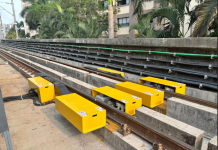
India’s hospitality sector is experiencing a sharp rise in travel demand during the festive season, with hotels, flights and buses in many regions operating near full capacity. According to industry data, inter-city buses have reached 95 – 100 % occupancy in the run-up to the Diwali weekend, while hotel bookings are reported to have increased by 15-20 % year-on-year.
This wave is driven less by long-haul vacations and more by short-haul, domestic getaways. Popular routes include Delhi–Rishikesh, Mumbai–Goa and Bengaluru–Coorg. Travellers are favouring trips lasting under two days within 200 – 300 km of metro cities.
“The festive season is both an opportunity and a stress test for hospitality operations,” says Sanjeev Nanda. He highlights that hotels must maintain service quality despite demand surges and changing guest expectations.
One of the major operational pressures for hotels is balancing staff, service and pricing during peak occupancy. “Luxury in high-demand periods is not about excess, it is about consistency,” Sanjeev Nanda states. With new travel behaviour, hotels are shifting focus toward boutique stays, heritage resorts and curated regional experiences to cater to evolving preferences.
Technology is playing a critical role in managing the surge. Hotels are using analytics, automation and dynamic pricing to adapt in real time. Short-haul travel growth is also benefiting Tier II and III destinations, which are seeing increased occupancy and local economic impact.
Looking ahead, Nanda observes that sustaining this momentum will be key for the hospitality industry: “Festive travel is becoming India’s new tourism engine. The key is not just to manage demand, but to convert it into long-term loyalty.”




